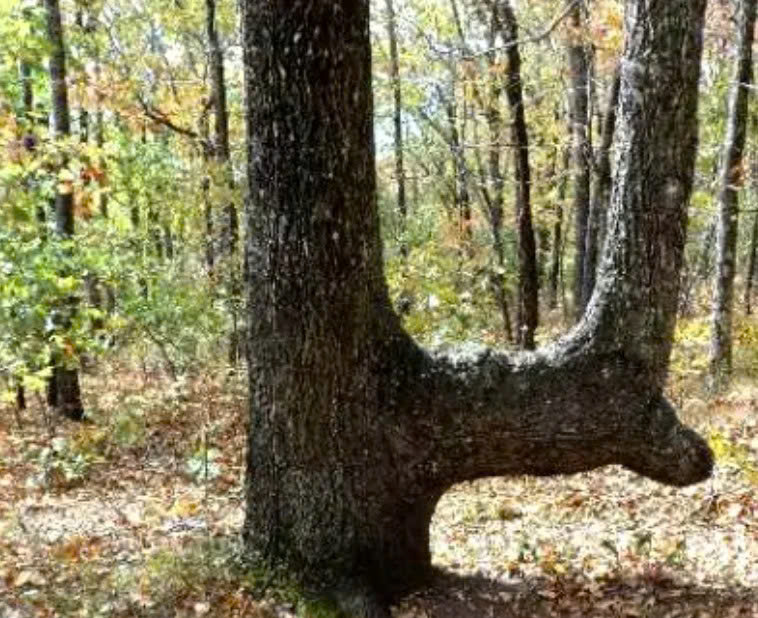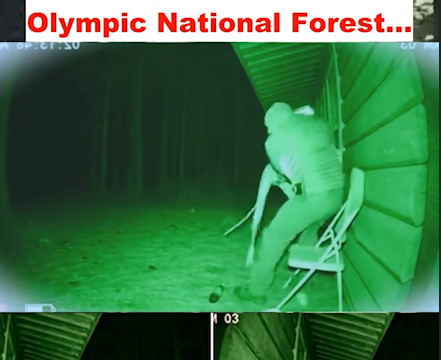Today, it’s almost impossible to imagine getting lost. With GPS, smartphones, and digital maps at our fingertips, finding our way around is second nature. Whether we’re in a city or deep in the countryside, a quick glance at a screen tells us exactly where to go. But centuries ago, before technology shaped the way we move, people had to rely on nature itself for guidance. Long before compasses, maps, or satellites, Native Americans developed an ingenious system for marking trails—using the very trees around them as living signposts.

In vast, untamed landscapes where dense forests stretched endlessly and landmarks were scarce, early travelers needed a way to orient themselves. Native Americans, with their deep understanding of the land, discovered that they could shape young trees to serve as permanent trail markers. These “trail trees,” sometimes called “marker trees,” guided hunters, traders, and entire tribes safely through forests, across rivers, and toward vital resources like water, food, and shelter.
So how did they do it? When a tree was still young and flexible, they would carefully bend it into a specific shape, often by tying it down with rawhide or other natural materials. In some cases, they would insert a piece of wood into a small notch or hole in the trunk, encouraging it to grow around the obstruction. As the tree matured, it held that bent position permanently, creating a unique and unmistakable curve. Over time, the trunk would thicken and heal around the straps or bindings, leaving behind visible scars that told future generations this was no ordinary tree.
At first glance, it can be difficult to tell whether a bent tree is the result of human intervention or natural forces. After all, nature can twist, warp, and shape trees in surprising ways—especially after storms, snow, or heavy winds. But there are subtle details that reveal the truth to a trained eye. Trees shaped by Native Americans often feature a distinct “nose” or protruding notch at the bend’s end, unlike trees bent by natural causes. They may also display symmetrical curves, deliberate angles, or scars where bindings once held them in place.
These living markers were incredibly effective. Unlike carved stones or wooden posts that could erode or decay, trees could endure centuries of change. Some of these remarkable living landmarks still stand today, over 150 or even 200 years old, quietly preserving stories of a time when humans read the land like a map.
According to the nonprofit organization American Forests, “Across the U.S., you can find trees that are oddly shaped. Their trunks have odd kinks in them or bend at strange angles. While some of them may indeed be simple quirks of nature, most of these trees are actually landmarks that helped guide indigenous people on their way. Native Americans would bend young trees to create permanent trail markers, designating safe paths through rough country and pointing travelers toward water, food, or other important landmarks. Over the years, the trees have grown, keeping their original shape, but with their purpose all but forgotten as modern life sprang up around them. Today, we may not need these ‘trail trees’ to navigate, but their place in history makes them invaluable. Imagine the stories these trees could tell.”
Those words paint a vivid picture of a time when nature itself served as both companion and compass. Each bent trunk once carried meaning—a silent arrow pointing the way home or toward survival. In a world without written maps, these trees were living guides, connecting people to their surroundings in a way modern technology can’t replicate.
To preserve this piece of American heritage, the organization Mountain Stewards was founded. Their mission? To document and protect these historical markers before they disappear. Using modern mapping technology, they’ve identified and recorded more than 1,000 trail trees across the United States, marking their locations and documenting their condition. Many of these trees can be found in states like Georgia, Alabama, North Carolina, and Tennessee—regions once crisscrossed by Native American trade and migration routes.
Each tree they map is a story in itself. Some point toward ancient river crossings or springs where travelers once stopped to rest. Others mark paths through mountain passes or indicate areas of historical significance, such as tribal meeting grounds. What’s truly remarkable is how these trees have endured, continuing to stand as quiet witnesses to centuries of change—from the first footsteps of Native Americans to the highways and cities that now surround them.
Walking through a forest today, most people pass these bent trees without a second thought. They might notice the unusual shape, perhaps even snap a photo, without realizing they’re standing in front of a living piece of navigation history. But for those who know what to look for—the distinct bend, the nose-like protrusion, the scarred bark—it’s like uncovering a secret message left by ancestors who once roamed these same paths.
Preserving trail trees isn’t just about protecting physical landmarks; it’s about honoring the connection between humanity and nature. These trees remind us of a time when people didn’t just travel through the land—they traveled with it. The forest wasn’t an obstacle to conquer; it was a trusted partner, guiding them safely home.
As modern society continues to expand, the importance of conservation becomes clearer. Developers and hikers alike are encouraged to treat these trail trees with respect, ensuring they remain for future generations to appreciate. Each bent trunk represents the wisdom and resilience of the Native American tribes who lived in harmony with their environment—an enduring lesson in sustainability and respect for the natural world.
In an age dominated by screens, satellites, and instant directions, it’s humbling to think that centuries ago, the simplest act of bending a sapling could create a navigation system that still speaks to us today. These trail trees are more than just curiosities; they’re living monuments to human ingenuity and our timeless bond with the earth.
So the next time you’re out exploring the woods and come across a tree bent in an odd way, take a moment to pause. Look closely at its shape, feel the texture of its bark, and imagine the hands that gently shaped it hundreds of years ago. That tree may once have guided travelers to safety—or perhaps toward home.
If this story about the remarkable history of Native American trail trees inspires you, consider sharing it with others. The more we learn about these natural landmarks, the better we can protect them. And perhaps, by understanding how people once navigated the world without technology, we can rediscover a little of our own connection to the land that sustains us all.





